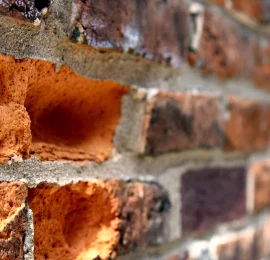Opening the Secrets of Lasting Masonry Construction Practices for Eco-Friendly Structures
Amongst the myriad methods to green building, sustainable stonework building and construction stands out as a tried and true and sturdy method that holds a wide range of untapped capacity. From the selection of products to innovative construction strategies, the secrets to achieving sustainability within masonry construction are diverse and fascinating.
Advantages of Sustainable Stonework Building And Construction
Accepting sustainable stonework construction practices not only reduces ecological effect but additionally uses long-term financial benefits to builders and areas. By utilizing materials like recycled blocks, obstructs, and stones, home builders can significantly lower the carbon footprint of their jobs while advertising source performance. Additionally, lasting stonework building and construction methods, such as correct insulation and thermal mass residential properties, can improve energy efficiency within buildings, bring about reduced functional costs with time.
Moreover, the durability and strength of stonework structures add to long-term economic advantages. Buildings built making use of lasting masonry practices commonly require less repair and maintenance, translating to cost savings for building contractors and residential or commercial property owners. The long life of masonry products additionally ensures that frameworks remain stable and protected, reducing the demand for constant improvements or substitutes.
Eco-Friendly Masonry Materials
Using green masonry materials is a crucial step in the direction of enhancing the sustainability of building practices and reducing ecological impact while maximizing long-lasting economic advantages. Lasting stonework materials are sourced, created, and utilized in a manner that minimizes total environmental impact. Sustainable concrete obstructs integrate recycled aggregates and may include better insulation residential or commercial properties, adding to energy efficiency in buildings.
Furthermore, all-natural products like adobe, rammed earth, and straw bales supply excellent thermal mass buildings, decreasing the requirement for heating and cooling down energy. These products are frequently in your area offered, advertising local economies and minimizing transportation-related carbon discharges. By choosing environmentally friendly masonry materials, building projects can dramatically reduce their ecological impact and add to the production of much healthier, extra sustainable constructed atmospheres.
Energy-Efficient Stonework Methods
Power effectiveness plays a critical function in boosting the sustainability of masonry building techniques. One crucial energy-efficient stonework technique is the usage of thermal mass, which involves incorporating thick materials like concrete or brick right into the building's framework to take in and save heat.

Technologies in Lasting Masonry
Current innovations in sustainable stonework techniques have brought about innovative strategies that are improving the building market. One such development is the development of self-healing concrete, which utilizes microorganisms embedded within the concrete to recover fractures autonomously. This advancement not only minimizes upkeep expenses yet also improves the sturdiness of masonry frameworks, adding to their sustainability.
An additional remarkable advancement is the usage advice of recycled aggregates in stonework construction - masonry contractor. By integrating products such as crushed ceramic waste or recycled glass into concrete mixes, contractors can lower the ecological effect of construction jobs while keeping structural honesty. This technique not just diverts waste from land fills however likewise preserves natural deposits, making it an essential innovation in sustainable masonry construction
Furthermore, the assimilation of digital design tools, such as Structure Details Modeling (BIM), is changing the means view it stonework frameworks are intended and constructed. BIM permits even more precise computations, lowered product wastefulness, and improved power effectiveness, inevitably leading to even more sustainable structure techniques. These developments jointly represent an appealing future for lasting masonry building and construction in the period of environment-friendly buildings.
Future Trends in Stonework Sustainability
With the cutting-edge strides made in lasting stonework methods, the future trends in masonry sustainability are positioned to additional change browse around this site the building industry. One of the essential patterns forming the future of masonry sustainability is the increased combination of technology. Developments such as Building Details Modeling (BIM) and virtual reality simulations are being utilized to optimize stonework building processes, leading to reduced product waste and improved power efficiency in structures.
In addition, the advancement of unique sustainable materials is established to play a considerable duty in improving the eco-friendliness of masonry building and construction. masonry contractor. Developments like self-healing concrete, recycled aggregates, and bio-based binders are getting traction for their capacity to minimize environmental effect while maintaining structural stability

Conclusion
Finally, sustainable masonry building practices offer countless advantages for environment-friendly buildings. By making use of eco-friendly products and energy-efficient methods, stonework can add to a much more sustainable constructed atmosphere. Developments in sustainable masonry are constantly being developed to better boost the ecological performance of structures. Looking towards the future, the pattern of stonework sustainability is anticipated to grow, causing even more ecologically friendly and energy-efficient construction techniques in the years to find.